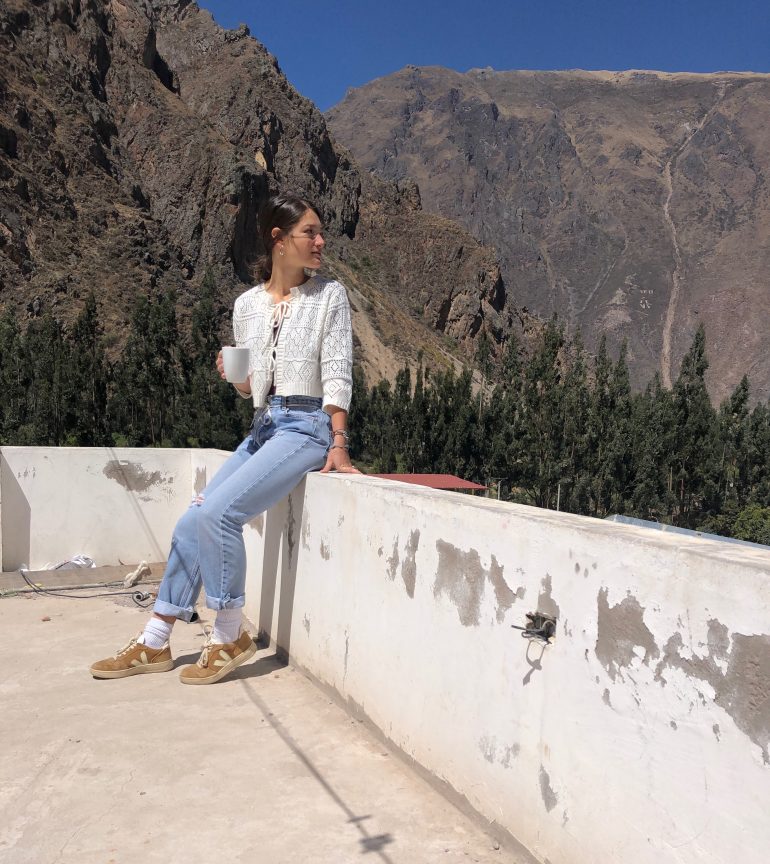Sustainability is the fashion buzzword of the year. From promises of a carbon-neutral future by fashion conglomerate Kering to the bankruptcy of fast fashion brand Forever 21, there seems to be a sense of change in one of the leading industries in pollution. In the midst of all of the sustainability confusion, I find myself struggling to identify what exactly “sustainable fashion” is. In a conversation with Senior Fibers Major Abby Hollis, I feel more situated not only in sustainability but also in artisanship and in understanding what it’s like to intern in two cultures on different ends of the world.
Hollis spent the first part of her summer with Joyn, a brand that sells bags crafted by artisans in Rajpur, India. For a few weeks, Hollis spent time at the company’s distribution center in her home-state of Arkansas, then moved on to spend a month living in Rajpur, working hands-on with the design and production part of the company. The latter half of her summer was spent in Peru interning for her second year with Awamaki, a brand that also focuses on bags made by local artists.
“[The companies are] both similar models,” Hollis said. “They work with local artists and artisans, lower income people, helping them get fair wages for what they’re doing. They’re doing this really amazing handmade stuff, but they don’t really know what it’s worth to the rest of the world.”
When I asked Hollis about how her work at SCAD had helped her prepare for these intensive roles in both companies—graphic design, creating patterns, preparing weaves, etc.—she was most passionate about the information gained from her sustainability classes. “I’ve really enjoyed those,” she said. “I feel like I have a much better understanding of what good solutions are because of them, and I’m able to feel more comfortable even calling out places where I feel like things need to be changed.”
For her senior project, the creation of a textile collection using a local system, Hollis was inspired by her time in Peru. The materials for an Awamaki bag would be sourced, dyed and manufactured locally. “It’s awesome to see it go within a five-mile radius from an alpaca to a finished bag,” Hollis said.
Locally sourced clothing is one of many answers to my question of what exactly sustainable fashion is. It’s important to note, though, that any fashion brand creating products is unsustainable, as the sale of goods creates profit, which then perpetuates the cycle back into creating more products.
When asked about her thoughts on companies jumping on the sustainable bandwagon, Hollis said, “There are companies who start with [sustainability] as part of their ethos, and then there are companies who don’t, and now they’re incorporating [sustainability], whether that’s superficial or not, I think it’s almost more important that a company is recognizing their flaws and being transparent about them and working to change that, versus being perfect or pretending like they’re perfect.”
This idea that a more sustainable fashion world can be created through overcoming complacency is inspiring to me. There is always another step—a boundary that we can push in the goal of saving our climate. Maybe that first step is heading to a thrift store rather than a fast fashion retailer, swapping clothes with your friends instead of buying something new or researching which brands are doing work to decrease their carbon footprint.
We wrapped up our conversation by talking about Hollis’ overarching lesson learned from her time with both Joyn and Awamaki. She said, “Letting go of a tiny bit of details. Sometimes really beautiful things can happen from that.” And with the often overwhelming workload we all face day-to-day, I find solace in the notion that sometimes the answers we’re looking for are best found when we take a step back and let go.
Words by: Nicholson Baird
Photos courtesy of Abby Hollis

